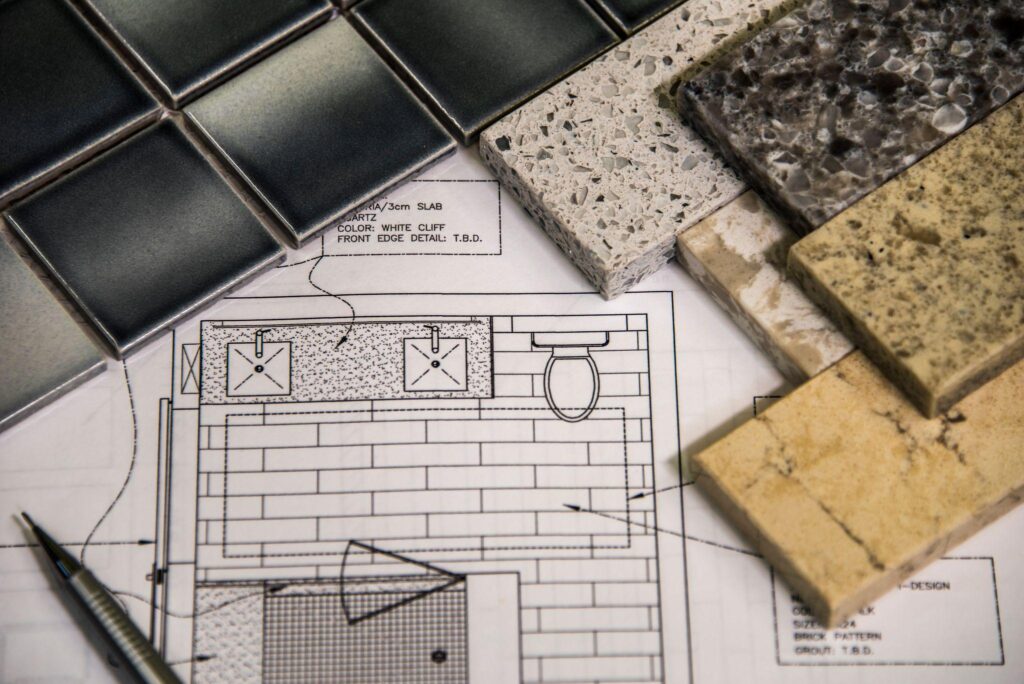How to Design a Bathroom Per Residential Code

The bathroom is probably one of the most essential rooms in a house. It’s important to make sure your space is functional, safe, and appealing. That’s why you must ensure you build yours according to residential codes. Following toilet clearance code requirements and other regulations is important.
While they may seem stiff and limiting, residential codes are designed to ensure everyone follows best practices when building or renovating their bathrooms.
What Is Residential Code?
Residential code refers to the set of regulations established by local authorities to ensure the safety, functionality, and accessibility of residential buildings. These codes cover various aspects of construction, including plumbing, electrical work, and structural integrity.
When remodeling a bathroom, adhering to residential codes ensures that the space meets safety standards, minimizes the risk of accidents, and enhances overall usability. Codes often specify requirements for elements such as toilet clearance, ventilation, and electrical safety. Following these regulations not only protects homeowners but also ensures compliance with legal standards, avoiding potential fines or reconstruction costs.
Why Is Following Code So Important?
Adhering to residential codes during bathroom remodeling is important for several reasons:
- Safety: Following codes helps prevent accidents and injuries by reducing risks like electrical shocks, water damage, and structural issues.
- Legal Compliance: Meeting code requirements ensures you avoid fines and penalties, and you won’t need to make expensive changes later.
- Home Value: A bathroom that meets code standards can increase your home’s value because buyers know it’s safe and well-built.
Overall, following code gives you peace of mind that your bathroom is safe, functional, and legally compliant. It also ensures that your remodeling and construction investments are protected for the long term.
Residential Bathroom Code Requirements
Thinking of remodeling your bathroom? Bathroom remodels are often at the top of the list for most home upgrades. That’s because, while being one of the least used rooms in terms of hours spent in them, they play a huge role in the way you enjoy your home.
While designing or redesigning a bathroom might seem easy, you need to approach it carefully. Make sure that every part of your project follows your local residential bathroom code. This includes plumbing, electrical work, and any structural changes. Following these rules will help you avoid problems and ensure your bathroom is safe and functional.
Residential codes can vary by state and locality, but there are a few common rules that most places choose to adopt for safety and functionality. Make sure you check all relevant local codes before doing any bathroom construction or remodeling so that it’s fully compliant for your area.
Residential Code vs. NKBA Guidelines
While residential codes are mandatory regulations set by local governments, the National Kitchen and Bath Association (NKBA) provides guidelines that focus on design and usability best practices. Residential codes ensure safety and compliance with legal standards, whereas NKBA guidelines aim to optimize functionality and aesthetic appeal.
For example, residential codes may dictate minimum clearance requirements for fixtures to ensure safety, while NKBA guidelines offer recommendations for ideal spacing to enhance comfort and convenience. Combining both ensures a bathroom that is not only compliant with legal standards but also user-friendly and visually appealing.
How to Make a Bathroom ADA-Compliant
As you remodel your bathroom, you must ensure it’s ADA-compliant. This simply means making sure your bathroom follows the building code and is easily accessible to everyone—including people with disabilities.
To make your bathroom ADA-compliant:
- Include grab bars. These are horizontal handrails that provide support.
- Introduce accessible toilets. The lavatory must be designed and fitted according to toilet clearance code requirements.
- Install a properly sized sink. The sink must be positioned in such a way that there’s enough knee clearance to accommodate people with wheelchairs.
- Incorporate shower seats. Whether you’re installing a tub shower or a one-piece shower stall, shower seats are required for ADA-compliant bathrooms.
Besides these requirements, you must also leave plenty of space in your bathroom and reduce clutter as much as possible.
Tips for Designing Bathrooms

Need some ideas for your bathroom design? Here are a few tips to help you design an ADA-compliant bathroom:
Sink Installation and Spacing
When installing sinks, make sure they’re spaced at least 4 inches from sidewalls. This is because sinks are prone to splashing water and could damage your moisture-sensitive drywall. You must also ensure your sinks have a minimum of 21 inches of clearance in front.
If your design includes two sinks placed side by side, make sure there’s a space of at least 4 inches between them. They should also be a minimum of 4 inches away from the bathtub.
Toilet Spacing and Design
Standard toilet clearance requirements state that toilets must be installed:
- At least 15 inches to any partition or side wall (measured from its center).
- 30 inches minimum away from any adjacent fixture (measured center to center).
- At least 21 inches clearance from a wall, fixture or door.
Shower and Bathtub Spacing
While the maximum size of a shower is not mandated, bathroom code dictates that your shower floor has a minimum size of 30 square inches. This minimum size is a safety issue, as it prevents people from falling when they try to squeeze past the narrow door. Other requirements include fitting anti-scald devices and water-saving showerheads.
Ventilation and Electrical Code
Other essential factors to consider as you design your bathroom are ventilation and electricals.
Your bathroom must have a window with an area of at least 3 square feet to provide adequate ventilation. You can also install a bathroom fan with the ability to pull at least 50 cubic feet of air per minute.
Regarding electricals in the bathroom, you must be very careful to follow code to the “T”. Doing so will help mitigate the risk of electrical shock and fire. For example:
- Light bulbs over bathtubs and showers must be vapor- and waterproof.
- Outlets must be ground-fault current interrupter (GFCI)
- Switches must be at least 60 inches away from tubs and showers. This is to discourage people standing in these places to turn switches on or off.
Get ADA-Compliant Fittings and Fixtures
To ensure that your bathroom is built according to code, you must also ensure that your fixtures and fittings are ADA-compliant. That’s why you must source all your fittings from a supplier that values compliance—a supplier like American Bath Enterprises, Inc.
If you’re looking for ADA-compliant shower systems or shower enclosures for your bathroom, get in touch with us at (888) 228-4925. We’ll be happy to help you with your bathroom remodel.



